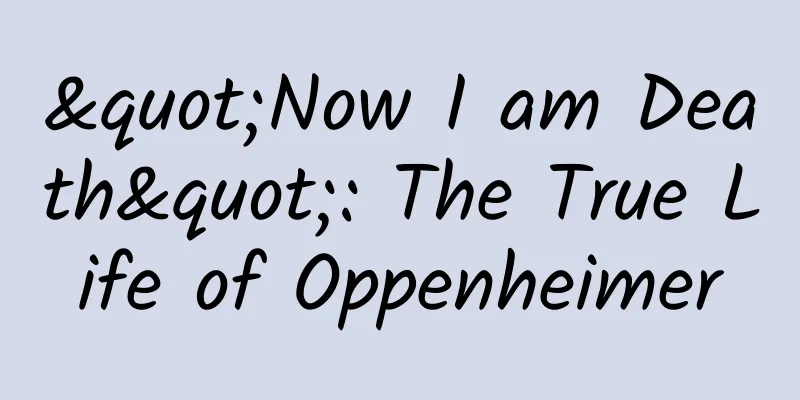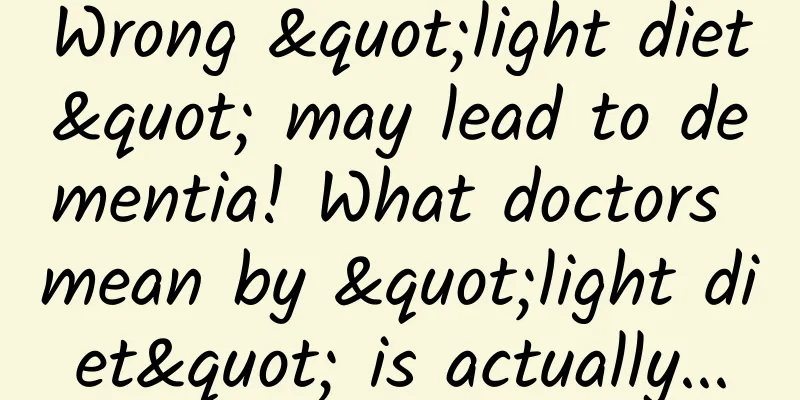"Now I am Death": The True Life of Oppenheimer

|
Oppenheimer oversees the final assembly of "The Gadget," a nuclear device, at the Trinity Test Site in July 1945. © US Department of Defense Leviathan Press: Oppenheimer loved literature since he was young. In his later years, Oppenheimer still listed the Bhagavad Gita as one of the ten books that had the most profound influence on him (another Sanskrit book, the Upanishads, and the poet Eliot's The Waste Land also had a profound influence on him). As early as when he was studying at Harvard, Oppenheimer developed a strong interest in Hindu philosophy. Later, in Berkeley, he studied Sanskrit with a Sanskrit professor every week. It was there that Oppenheimer first came into contact with the Bhagavad Gita. In a twist of fate, the book’s plot parallels his future experiences—a decade later, Oppenheimer finds himself in almost the same predicament as the Bhagavad Gita—both figuratively and literally. Whether Oppenheimer joins the Manhattan Project or not, the war will continue, just like Arjuna in Bhagavad Gita. In November of the same year after the end of World War II, Oppenheimer said that nuclear weapons were "an evil thing...by all the standards of the world in which we grow up." In 1949, he publicly opposed the development of subsequent hydrogen bombs, and the McCarthyism of the 1950s eventually led to the US government revoking his top-secret security clearance. The hearings against him in 1954 almost turned over Oppenheimer's past, including his close relationship with leftist Haakon Chevalier (the United States suspected Chevalier of being a spy for the Soviet government) and why Oppenheimer continued to have an affair with his ex-girlfriend, Joan Tatlock, a member of the Communist Party of the United States, who he spent a night with in the summer of 1943. It was the early morning of July 16, 1945, and Robert Oppenheimer was in a control bunker awaiting the moment that would change the world. About 10 kilometers (6 miles) away, the world’s first atomic bomb test, codenamed Trinity, was about to take place in the vast sands of the Jornada del Muerto Desert in New Mexico, USA. Oppenheimer was visibly nervous. He had always been slender, but three years into his tenure as director of Project Y, the scientific division of the Manhattan Project that designed and built the atomic bomb, his weight had dropped to just over 52 kilograms (115 pounds). At 178 centimeters (5 feet 10 inches) tall, this made him look skinny. That night, anxiety and a cough caused by smoking kept him awake, and he slept only four hours. That day in 1945 was one of several key moments in Oppenheimer's life described by historians Kai Bird and Martin J Sherwin in their 2005 biography American Prometheus, which inspired the new film Oppenheimer, which was released in the US on July 21. According to Bird and Sherwin, an Army general closely observed Oppenheimer's emotions during the final minutes of the countdown: "Dr. Oppenheimer ... became increasingly nervous during the final seconds. He almost completely held his breath ..." Image of Trinity 0.025 seconds after it exploded on July 16, 1945. © US Department of Defense The explosion was brighter than the sun. The force of the detonation was equivalent to 21 kilotons of TNT, the largest ever detonated. Its shockwave was felt 160 kilometers (100 miles) away. As the roar engulfed the earth and the mushroom cloud rose in the sky, Oppenheimer's expression relaxed and he looked "incredibly relieved." Minutes later, Oppenheimer’s friend and colleague Isidor Rabi spotted him from a distance: “I’ll never forget the way he walked; I’ll never forget the way he stepped out of the car… He walked like Sheriff Will in the movie High Noon… He had that swagger. He did it.” In interviews in the 1960s, Oppenheimer added a layer of solemnity to his reaction, claiming that in the moments after the explosion, a passage from the Hindu scripture, the Bhagavad Gita, came to his mind: “Now am I death, the destroyer of all worlds.” The Gadget, a nuclear device placed atop the tower during the 1945 Trinity test. © Getty Images In the days that followed, his friends said he seemed increasingly depressed. “For two weeks, Robert became very quiet and thoughtful,” one recalled, “because he knew what was going to happen.” One morning, he was heard lamenting (in a condescending tone) the impending fate of the Japanese: “Those poor little people, those poor little people.” But just a few days later, he was tense, focused, and serious again. In a meeting with his military counterparts, he seemed to have forgotten all about the “poor little man.” According to Bird and Sherwin, he focused on the importance of the right conditions for dropping the bombs: “They certainly can’t drop it in the rain or fog… Don’t let them set the detonation point too high. It’s set just right. Don’t let it go [higher] or it won’t do enough damage to the target.” The world's first nuclear mushroom cloud begins to rise nine seconds after the Trinity explosion on July 16, 1945. © US Department of Defense Less than a month after Trinity, when Oppenheimer announced the successful bombing of Hiroshima to a group of colleagues, one onlooker noted that Oppenheimer “pumped his clenched fist over his head like a victorious boxer.” The applause “nearly blew the roof off.” Nervousness, ambition, grandiosity, and morbid depression are traits that are rarely combined in a single individual. Oppenheimer was the emotional and intellectual heart of the Manhattan Project: He, more than any other person, made the atomic bomb a reality. Jeremy Bernstein, who worked with him after the war, was convinced that no one else could have done it. As he wrote in his 2004 biography, A Portrait of an Enigma, “Had Oppenheimer been at the head of Los Alamos, I believe that, for better or worse, World War II would have ended … without the involvement of nuclear weapons.” The variety of Oppenheimer's reactions to the results of his work—not to mention the speed with which he shifted between these emotions—may seem confusing. Neurosis, ambition, grandiose arrogance, and morbid depression are unlikely to combine in one person, especially one who played such a central role in the projects that provoked them. Bird and Sherwin also called Oppenheimer an “enigma”: “He was a theoretical physicist who exhibited the charismatic qualities of a great leader, an aesthete full of ambiguity.” He was a scientist, but he was also, as another friend once described him, “a first-rate manipulator of the imagination.” Oppenheimer, smoking a cigarette in 1946. © Wikimedia Commons --- The film "Oppenheimer" was released in the United States on July 21. It is adapted from the Pulitzer Prize-winning "American Prometheus". Oppenheimer is played by Cillian Murphy. The film also portrays several other real people, such as Leslie Groves (Matt Damon), the general who recruited Oppenheimer, and people in Oppenheimer's personal life, such as psychiatrist Joan Tatlock (Florence Pugh), who he dated in the 1930s, and his wife Katie Oppenheimer (Emily Blunt). Oppenheimer (left) and General Leslie Groves at the Trinity nuclear test site in September 1945. It was two months after the Trinity test and shortly after the end of World War II. They wore white shoe covers to prevent radioactive dust from getting on their soles. © Wikimedia Commons According to Bird and Sherwin, the contradictions in Oppenheimer’s character—the ones that have made it difficult for his friends and biographers to explain—seem to have been there from the beginning. Oppenheimer was born in New York City in 1904. His parents were first-generation German-Jewish immigrants who made their fortune in the textile trade. The Oppenheimers lived in a large apartment on the Upper West Side, with three maids, a chauffeur, and walls covered in European art. Despite Oppenheimer's upbringing in this luxurious environment, his childhood friends recalled that he was not spoiled, but rather generous. His school friend Jane Didisheim remembered him as a person who "blushed very easily", "very weak, pink-cheeked, very shy...", but also "very smart". "Soon everyone recognized that he was different and better than others," she said. Oppenheimer as a child with his father, circa 1905. © The J. Robert Oppenheimer Memorial Committee At nine, he began reading Greek and Latin philosophy and was fascinated by mineralogy—he wandered around Central Park and wrote letters to the New York Mineralogical Club describing his discoveries. His letters were so good that the club mistook him for an adult and invited him to give a lecture. This intelligence often made the young Oppenheimer a loner, Bird and Sherwin wrote. “He was always absorbed in what he was doing or thinking about,” one friend recalled. He had no interest in conforming to society’s gender expectations—he had no interest in sports or what his cousin called “the rough scuffles of his age”; “he was often ridiculed and mocked for not being like the other boys.” But his parents were convinced he was a genius. “In return for the trust my parents had shown me, I developed an unpleasant ego, ” Oppenheimer later remarked, “which must have been offensive, I am sure, to the children and adults who had the misfortune to come into contact with me.” He once told another friend: “It is not fun to turn the pages of a book and say, ‘Yes, yes, of course, I know that.’ ” Oppenheimer at Harvard University, 1925. © Harvard University Archives After Oppenheimer left home to study chemistry at Harvard, the fragility of his psychological makeup became apparent: his brittle arrogance and barely concealed sensitivity seemed to do him little good. In a letter from 1923, included in a collection edited in 1980 by Alice Kimbal Smith and Charles Weiner: "I toiled away, writing countless papers, notes, poems, stories, and garbage... I created stench in three different labs... I served tea to lost souls, talked to them about high-level topics, and on weekends I went out and refined my low-level energy into laughter and exhaustion, reading Greek, making mistakes, searching my desk for letters, and wishing I were dead. That was it." In the film, Cillian Murphy plays Robert Oppenheimer, wearing a hat and chain-smoking. © Universal Pictures Subsequent correspondence, compiled by Smith and Weiner, shows that these problems persisted until he went to Cambridge, England, for graduate school. His advisors insisted on applied laboratory work, one of Oppenheimer’s weaknesses. “I am having a terrible time now,” he wrote in 1925. “Laboratory work is extremely boring, I am really not good at it, and I feel I am not learning anything.” Such intense emotion nearly led Oppenheimer to disaster later that year when he deliberately placed an apple contaminated by laboratory chemicals on his mentor's desk, friends later speculated that he may have done so out of jealousy and low self-esteem. His advisor didn’t eat the apple, but Oppenheimer nearly lost his Cambridge status, and to save it he had to see a psychiatrist, who diagnosed him with insanity but ignored him, saying that treatment would not help. Reflecting on that period, Oppenheimer later said that he had seriously considered suicide over Christmas. The following year, during a trip to Paris, his close friend Francis Fergusson told him that he had proposed to his girlfriend. Oppenheimer responded by trying to strangle him: "He came up behind me with a luggage strap," Fergusson recalled, "and put it around my neck... I managed to pull it free, and then he fell to the floor and cried." Psychiatry, it seems, didn’t save Oppenheimer, but literature was his salvation: According to Bird and Sherwin, he read Marcel Proust’s Remembrance of Things Past while on a walking holiday in Corsica, and found that some of the passages mirrored his own, comforting him and showing him a more compassionate way of being. He knew by heart a passage about "the indifference of men to the pain deliberately inflicted on them" and how this indifference was "a terrible and lasting form of cruelty". The question of attitudes towards pain was a long-standing interest of Oppenheimer, guiding his interest in spiritual and philosophical texts and ultimately playing a major role in the work that established his reputation. A remark he made to friends during this vacation seemed to foreshadow the future: "The person I admire most is the one who is very good at many things and yet has a face full of tears." The person I admire most is probably someone who is excellent at many things but still has tears all over his face. —Oppenheimer He later recalled that he returned to England in a lighter mood than before, feeling "more gracious, more tolerant." In early 1926, he met the director of the Institute for Theoretical Physics at the University of Göttingen in Germany, who quickly became convinced of Oppenheimer's talents as a theorist and invited him to study there. He later described 1926 as the year he "entered physics," according to Smith and Weiner. It was to be a turning point. Over the next year, he earned his doctorate and a postdoctoral fellowship, joined a community of scholars who were advancing theoretical physics, and met scientists who would become his lifelong friends, many of whom would eventually join Oppenheimer’s group at Los Alamos. Oppenheimer read widely, ranging from poetry to Eastern philosophy. © Getty Images After returning to the United States, Oppenheimer spent a few months at Harvard before moving to California to pursue his career in physics. The tone of his letters from this period reflects a more stable, generous state of mind. He wrote to his brother about love and his continued interest in art. At UC Berkeley, he worked closely with experimentalists interpreting the results of their experiments on cosmic rays and radioactive decay. He later described himself as “the only one who understood what it all meant.” He said the department he eventually founded was born out of his need to communicate his beloved theory: “First to faculty and colleagues, and then to anyone who would listen…to explain what we had learned and what questions remained.” Initially, Oppenheimer described himself as a "difficult" teacher, but it was in this role that he developed the personal charm and social skills that helped him get by during his time at Project Y. Smith and Weiner quote one of Oppenheimer's colleagues as saying that his students "tried to imitate him. They copied his gestures, his mannerisms, his intonation. He really made a difference in their lives." In the early 1930s, Oppenheimer continued his reading in the humanities while consolidating his academic career. It was during this period that he discovered the Hindu scriptures and learned Sanskrit in order to read the untranslated Bhagavad Gita, from which he later famously quoted the line “Now I am death.” His interests seemed to be more than intellectual, representing a continuation of a self-directed bibliotherapy that he had begun with Proust in his twenties. The story of the Bhagavad Gita, which revolves around a war between two branches of an aristocratic family, provided Oppenheimer with a philosophical foundation that was directly applicable to the moral ambiguities he faced in Plan Y. It stressed the concepts of responsibility, fate, and detachment from outcomes, and stressed that fear of consequences was no excuse for inaction. In a 1932 letter to his brother, Oppenheimer specifically mentioned the Bhagavad Gita, immediately noting that a situation of war might give him an opportunity to put this philosophy into practice: “I believe that through discipline… we can achieve tranquility… I believe that through discipline we can learn to hold on to those things essential to our happiness in an increasingly hostile environment… Therefore, I believe that everything that evokes a sense of discipline: learning, our duties to men and to society, war… should be viewed with deep gratitude; for only through them is it possible to achieve a glimmer of detachment; only through them can we understand tranquility.” In the mid-1930s, Oppenheimer also met and fell in love with psychiatrist and physician Jean Tatlock. According to Bird and Sherwin, Tatlock's character was as complex as Oppenheimer's. She was well-read and had a strong sense of social responsibility. One of her childhood friends described her as having "a great temperament." Oppenheimer proposed to Tatlock more than once, but she refused. She is credited with introducing him to radical politics and the poetry of John Donne. Joan Tatlock (left); Florence Pugh plays Tatlock in the film Oppenheimer. © Library of Congress/Universal Pictures The two continued to see each other occasionally after Oppenheimer married biologist Katherine "Kitty" Harrison in 1940. Kitty later joined Oppenheimer's Project Y, where she worked as a phlebotomist and studied the hazards of radiation. Oppenheimer and his family - he married Katherine "Katie" Harrison, a biologist who joined him at Project Y. © Getty Images Physicists were more concerned about the nuclear threat than politicians, and it was a letter from Albert Einstein that first alerted senior U.S. government leaders to the problem in 1939. The government was slow to respond, but the alarm spread through the scientific community, eventually convincing the president to take action. As one of the country's most prominent physicists, Oppenheimer was assigned, along with several other scientists, to seriously study the potential of nuclear weapons. By September 1942, it became clear that the bomb was possible, and a detailed plan for its development began to take shape, thanks in part to Oppenheimer’s team. When Oppenheimer heard that he had been nominated to lead the effort, he began to make his own preparations, according to Bird and Sherwin. “I’m going to cut off all ties with Communism,” he told a friend at the time, “because if I don’t, the government will find it very difficult to employ me. I don’t want anything to interfere with my service to the country.” “Oppenheimer’s problem was that the thing he loved—the American government—didn’t love him,” Einstein later said. His patriotism and desire to please apparently played a role in the government’s recruitment of him. General Leslie Groves, the military leader of the Manhattan Engineering District, was charged with finding a scientific director for the bomb project. According to the 2002 biography Racing for the Bomb, Groves faced opposition when he nominated Oppenheimer as scientific director. Oppenheimer's "extremely liberal background" raised concerns. But Groves noted his "arrogant ambition" in addition to his talent and existing scientific knowledge. The Manhattan Project's security chief also noticed this: "I became convinced that he was not only loyal but would not let anything interfere with the successful completion of his mission and thus jeopardize his place in the history of science." In his 1988 book The Making of The Atomic Bomb, Oppenheimer's friend Isidor Rabi said he thought it was "a completely unrealistic appointment" at the time, but later admitted it was "a real stroke of genius on the part of General Groves." A group of physicists at the 1946 Los Alamos Colloquium. Oppenheimer, third from left in the second row, is wearing a black jacket and tie. Other scientists pictured include Enrico Fermi, Edward Teller, and Richard Feynman. © Wikimedia Commons At Los Alamos, as elsewhere, Oppenheimer carried out his rebellious, interdisciplinary beliefs. In his 1979 autobiography, What Little I Remember, the Austrian-born physicist Otto Frisch recalled that Oppenheimer recruited not only the scientists he needed but also “a painter, a philosopher, and a few other unlikely figures in the project, without whom, he believed, civilization would be incomplete.” After the war, Oppenheimer's attitude seemed to have changed. He described nuclear weapons as "instruments of aggression, fear, and terror" and the weapons industry as "the work of the devil." During a meeting in October 1945, he famously told President Harry S. Truman, “I feel like I have blood on my hands.” The president later said, “I told him the blood was on my hands — let me worry about it.” This exchange has a striking echo of a passage in Oppenheimer’s beloved Bhagavad Gita, between Prince Arjuna and the god Krishna. Arjuna refuses to fight because he feels that if the battle begins, he will be responsible for the deaths of his companions, but Krishna relieves him of the burden: “You will see in me the murderer of these people… Stand up, fight for fame, conquer the enemy, and enjoy the wealth of the country! They have been killed by me; you will be the weapon of murder.” Oppenheimer had used similar arguments to smooth over his own and his colleagues’ moral hesitations during the development of the atomic bomb. As scientists, he told them, they were not responsible for deciding how the weapon would be used—only for doing their jobs. If there was blood to be shed, it would be on the hands of politicians. Once the deed was actually done, however, Oppenheimer’s confidence in this position seemed to waver. As Byrd and Sherwin recount, after the war, while working at the Atomic Energy Commission, Oppenheimer opposed further development of nuclear weapons, including the more powerful hydrogen bomb—for which his earlier research had paved the way. These actions led to Oppenheimer being investigated by the US government in 1954 and his security clearance being stripped, marking his end to policy work. The academic community came to his defense. Writing in The New Republic in 1955, philosopher Bertrand Russell wrote, "The results of the investigation show that he had made undeniable mistakes, one of which was quite serious from the point of view of security. But there is no evidence that he was disloyal or had done anything that could be considered treasonous... The scientists are faced with a tragic dilemma." President Lyndon Johnson presenting Oppenheimer with the Enrico Fermi Award in 1963. © Wikimedia Commons In 1963, the US government awarded him the Enrico Fermi Award in a gesture of political rehabilitation, but it was not until 2022, 55 years after his death, that the US government overturned the 1954 decision to strip him of his security clearance and affirmed Oppenheimer's loyalty. In the last decades of his life, Oppenheimer was both proud of the bomb's technical achievements and guilty about its impact. There was also a sense of resignation in his assessments, and he said more than once that the invention of the atomic bomb was inevitable. He spent the last 20 years of his life as director of the Institute for Advanced Study in Princeton, New Jersey, working with Einstein and other physicists. Einstein would say: “Oppenheimer’s problem was that the thing he loved – the American government – didn’t love him.” Oppenheimer and Einstein, circa 1950s. © Alamy As at Los Alamos, Oppenheimer focused on the importance of advancing interdisciplinary work, emphasizing in his speeches that science needed the humanities to better understand its own meaning, Bird and Sherwin write. To this end, he recruited a large number of nonscientists, including classicists, poets, and psychologists. Later, he came to believe that the atomic energy problem was beyond the intellectual tools of the day, that it was, in the words of President Truman, "a new power too revolutionary to be considered within the framework of old ideas." In a 1965 speech, he said, "I have heard from some of the great men of our time that when they made a startling discovery, they knew it was a good thing because they were frightened." The speech was later collected in the collection Uncommon Sense, published in 1984. When he talks about moments of unsettling scientific discovery, he likes to quote the poet John Donne: “All falls to pieces, all coherence falls away.” John Keats, another poet whom Oppenheimer loved, coined the term “negative capability” to describe a quality shared by those he admired: “that is, when a man is capable of uncertainty, mystery, doubt, and of rushing after fact and reason.” It seems that the philosopher Bertrand Russell had something similar in mind when he wrote of Oppenheimer’s “inability to see things simply,” saying, “This inability is not surprising in a man of such a complex and delicate mental apparatus.” When we describe Oppenheimer’s contradictions, his mutability, his constant wandering between poetry and science, his resistance to simple description, perhaps we are identifying the very qualities that enabled him to build the atomic bomb. Portrait of Oppenheimer, painted by the author. Even during this great and terrible pursuit, Oppenheimer still had the "tear-stained face" he had predicted in his 20s. The name of the "Trinity" test is believed to come from John Donne's poem "Batter my heart, three-person'd God": "If I can stand up, you will knock me down, destroy, blow me away, burn me up with all your power, and make me rise again." Donne’s poetry was introduced to him by Joan Tatlock, for whom some believe he remained in love, but she committed suicide a year before the test. The atomic bomb project was full of Oppenheimer’s imagination, his romantic and tragic heart. When General Groves interviewed Oppenheimer for Plan Y, he may have seen his hubris, but he may also have seen his ability to allow himself to be hubris when he needed to. Although the atomic bomb was the result of scientific research, it was also the product of Oppenheimer’s ability and willingness to imagine himself as the man who could invent it. Oppenheimer was a heavy smoker since adolescence and suffered from bouts of tuberculosis throughout his life. He died of throat cancer in 1967 at the age of 62. Two years before his death, in a rare moment of simplicity, he drew a line between the practice of science and the practice of poetry. Unlike poetry, he said, “Science is about learning not to make the same mistakes again.” By Ben Platts-Mills Translated by Kushan Proofreading/Rabbit's Light Footsteps Original article/www.bbc.com/future/article/20230712-robert-oppenheimer-manhattan-project-nuclear-scientist-atomic-bomb This article is based on the Creative Commons License (BY-NC) and is published by Kushan on Leviathan The article only reflects the author's views and does not necessarily represent the position of Leviathan |
>>: How do we control the rocket after it's launched?
Recommend
The most complete analysis of brand advertising in Tik Tok’s information flow!
Douyin ’s brand advertising product matrix: Douyi...
Case analysis | Analysis of Lagou education event promotion!
As customer acquisition costs continue to rise, p...
Starting from CES 2019, what changes will there be in the smartphone industry?
As a routine technology event at the beginning of...
How to use order-sharing red envelopes to attract new users?
Many people order takeout every day. Before order...
Stop cleaning up "zombie fans" WeChat official: This is a scam and is extremely harmful
You may have hundreds or even thousands of WeChat...
How to reduce the harm of drinking during the Spring Festival? Please keep this guide!
After the New Year's Eve, various gatherings ...
Stifel Investment Bank: Tesla's target price will be lowered by 4% to $455 in April 2025, and Q1 delivery volume is expected to drop by 23% to 353,418 vehicles
Recently, many investment banks have lowered thei...
WeChat iOS 8.0.6 official version released: Status adds time-limited reminders, Moments can forward videos
[[399977]] May 17 news: WeChat quietly launched t...
I Have a Horror House free, I Have a Horror House latest chapter list!
A hearse emitting a strange smell stopped at the ...
August 2023 "Science" Rumor List: Can iodized salt prevent nuclear radiation? Does the Forbidden City never accumulate water?
The list of "scientific" rumors for Aug...
With over 10 million new users every month, how can TikTok avoid the fate of being a flash in the pan?
Throughout July, the number of users on the entir...
There is no best copywriting, only the most suitable copywriting at the moment. There is no need to always write it to 100 points!
Regarding copywriting , the author has always held...
How do we do code review?
A few days ago, I read "Code Review: The Hop...
Google "repents" to cut off supply to Huawei: It is reported that it is lobbying for an exemption from the ban
This article is reprinted with permission from AI...
In addition to SEM promotion, why do we need to invest in native advertising?
The key differences between native advertising an...









